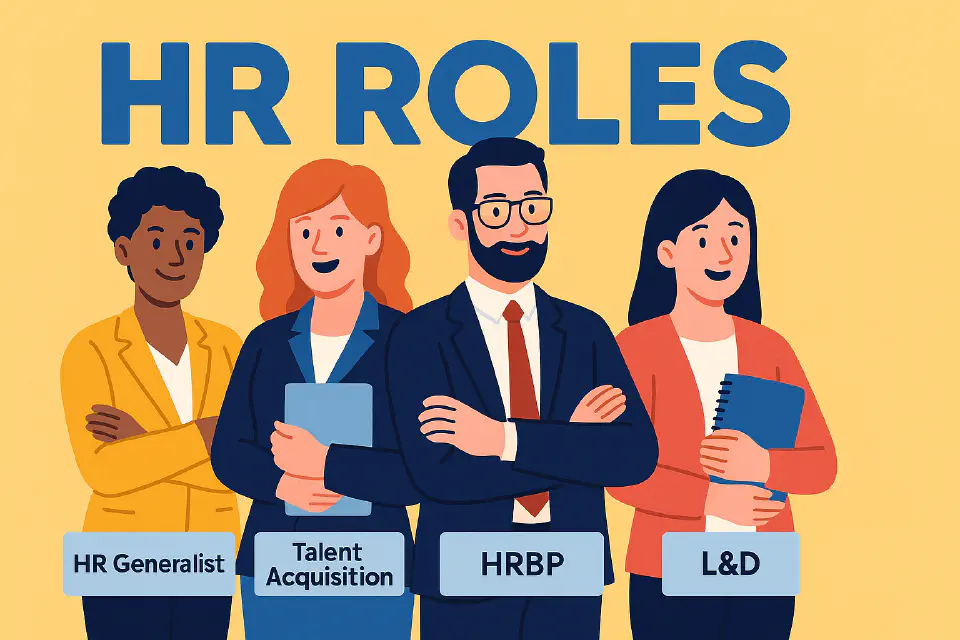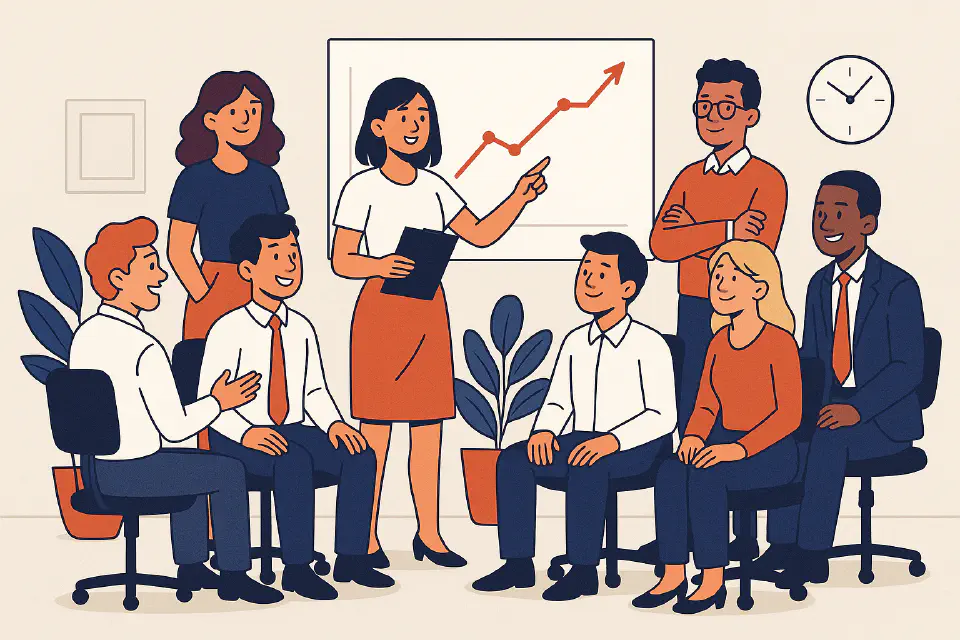
HR Roles: Who’s Who in Modern People Teams
HR is no longer a one-size-fits-all department. From data analysts to talent partners, today’s HR teams bring together a diverse range of roles and specializations. This guide introduces the most common HR positions — and shows how they fit into a modern people strategy.
Why HR Roles Have Evolved
Modern organizations need HR to do more than administer policies or manage payroll. As work becomes more complex, distributed, and talent-driven, HR roles have diversified and deepened.
What used to be a single “HR manager” is now often a team of specialists, each focused on a critical area of the employee experience.

Core Types of HR Roles
HR roles typically fall into one of three categories:
1. Generalists
Handle a wide range of HR functions. Common in smaller organizations or early-stage startups.
Titles: HR Generalist, People Operations Associate
Responsibilities:
- Basic employee relations
- Administering benefits
- Supporting hiring and onboarding
- Assisting with policy implementation
2. Specialists
Focus on a specific area of HR. Found more often in mid-size or large companies.
Common specialist areas:
- Talent Acquisition (TA / Recruiting)
- Learning & Development (L&D)
- Compensation & Benefits (C&B)
- Diversity, Equity & Inclusion (DEI)
- Employee Experience (EX)
- HR Data & Analytics
Each of these roles requires deep domain knowledge and specific tools, such as applicant tracking systems (ATS), LMS platforms, or compensation benchmarking frameworks.
3. Strategic & Leadership Roles
These roles drive overall people strategy, partner with senior leadership, and align HR initiatives with business objectives.
Key titles include:
- HR Business Partner (HRBP)
- Chief People Officer (CPO) / CHRO
- Head of People
These professionals move beyond process execution to act as:
- Internal consultants
- Change agents
- Strategic advisors
Visual: HR Role Map
We’ll include an infographic showing:
- Role clusters (Generalist, Specialist, Leadership)
- Key responsibilities
- Common reporting lines
🛠 Image placeholder: HR team structure map (org chart-style)
How HR Teams Are Structured
Depending on company size, HR structures vary:
| Company Size | Typical HR Setup |
|---|---|
| 1–50 employees | 1–2 generalists or a People Ops lead |
| 50–200 employees | Mix of generalists + 1–2 specialists (e.g. TA) |
| 200+ employees | Fully specialized team with HRBP structure |
| 1000+ employees | Centers of Excellence (CoEs) + regional teams |
In larger companies, HR roles are often organized into CoEs (Centers of Excellence) for deep expertise, and HRBPs for cross-functional alignment.
Best Practice: Match Roles to Strategy
Don’t hire based on job titles alone. Start by identifying your business goals — then define the HR capabilities needed to support them.
- Growing fast? You might need more TA and L&D.
- Scaling globally? Add compliance, payroll, and mobility experts.
- Changing culture? Focus on EX, DEI, and leadership support.
Final Thought: Building the Right Mix
There is no perfect HR team template. What matters is designing a mix of roles that fit your organization’s size, stage, and culture.
As HR continues to evolve, tomorrow’s team might include:
- HR technologists
- Employee experience designers
- People analytics scientists
The best teams don’t just hire for today — they build capabilities for what’s next.